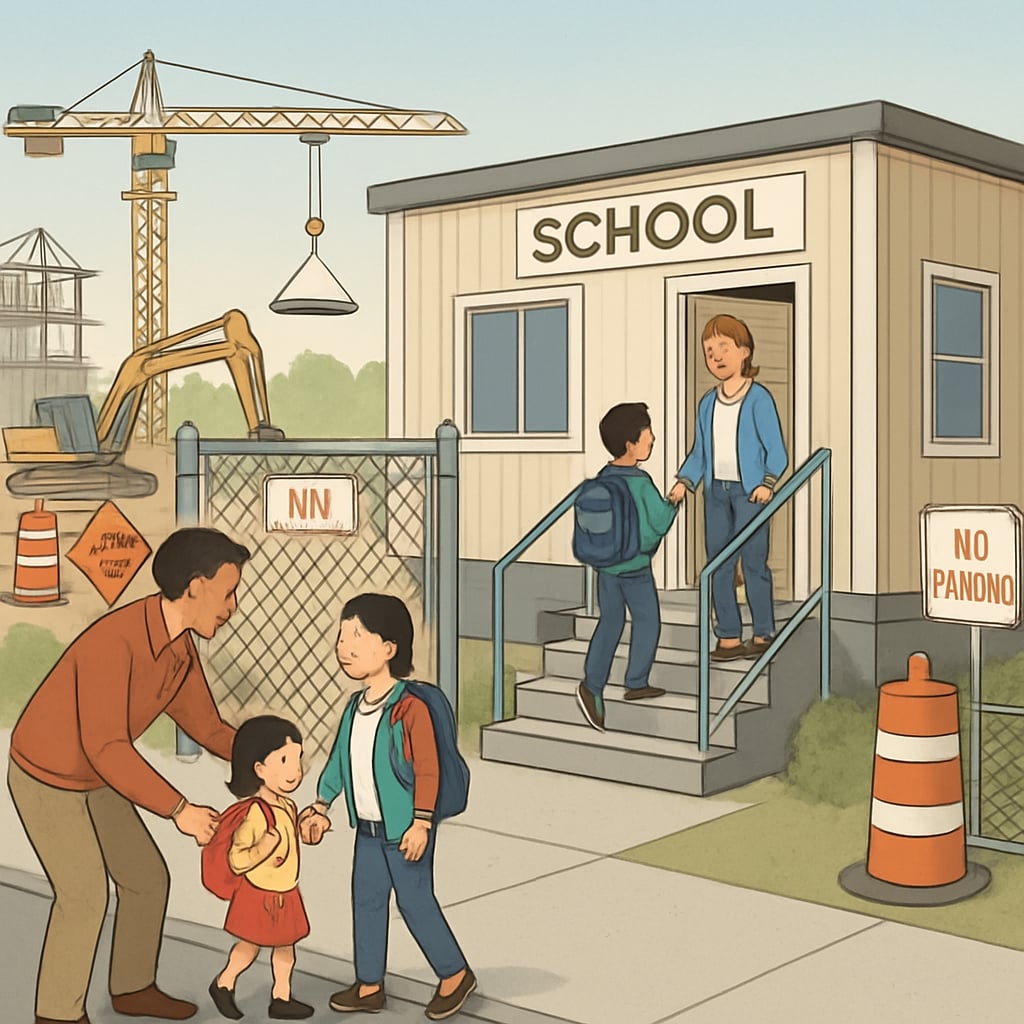Temporary school reconstruction, including changes to campus facilities, student routines, and parental involvement, can significantly impact a child’s academic and emotional development. As schools undergo significant renovation or expansion, the use of temporary classrooms such as modular buildings, the reduction of recreational spaces, and restricted parental access often create challenges for young learners. This article examines these hurdles, emphasizing collaboration between parents and schools to ensure that children thrive despite the temporary disruptions.
Understanding the Impact of Temporary Facilities
During school reconstruction, many campuses rely on temporary infrastructure like prefab classrooms or activity boardrooms. While functional, these spaces often lack the warmth and design of traditional classrooms, which can affect students’ focus and comfort. Additionally, outdoor playgrounds may be limited or unavailable, reducing opportunities for physical activity and socialization.
Research highlights that physical environment plays a critical role in a child’s ability to concentrate and learn effectively. For example, environmental psychology studies show that children respond positively to spaces designed to be stimulating and inviting. Temporary setups often fail to meet these criteria, potentially diminishing students’ enthusiasm for learning.

Challenges in Parental Engagement
Another key issue during school reconstruction is the restriction of parental access to the campus. Safety concerns and construction logistics often limit the ability of families to participate directly in school activities or visit their children during the day. This can lead to feelings of disconnection, particularly for younger students who rely on parental presence for reassurance.
For parents, restricted access may also reduce their ability to monitor their child’s emotional state or academic progress effectively. Disengagement could hinder opportunities for open communication between educators and families, which is essential for addressing individual student concerns.

Practical Strategies to Support Students
Despite these challenges, parents and schools can take proactive steps to ensure that children adapt effectively to temporary changes:
- Create a positive outlook: Focus on the long-term benefits of the reconstruction and explain its purpose to children in an age-appropriate way.
- Enhance communication: Use digital communication tools to stay updated on school progress and events. Apps or email newsletters can bridge the gap caused by restricted access.
- Maintain routines: Consistent daily schedules, including homework and recreational activities, help children feel secure amidst changing surroundings.
- Advocate for temporary solutions: Schools can introduce mobile playgrounds or interactive indoor activities to compensate for missing facilities.
In addition, schools can encourage virtual parent-teacher conferences and workshops to strengthen collaboration during the reconstruction phase. For example, parent-teacher associations often provide a platform for discussing strategies and resolving concerns.
Fostering Emotional Resilience During Changes
Helping children build emotional resilience is essential during periods of disruption. Open discussions about their feelings and concerns can reduce anxiety and foster adaptability. Parents should actively validate their child’s emotions while guiding them toward problem-solving approaches.
Equally important is the role of educators. Teachers can integrate mindfulness exercises or emotional literacy lessons into daily routines. By creating a supportive atmosphere, students can navigate the changes with better confidence and optimism.
Ultimately, the combined efforts of parents, educators, and school administrators can transform temporary challenges into opportunities for growth. By maintaining open communication and prioritizing students’ emotional well-being, children can emerge stronger and more adaptable in the face of campus reconstruction.
Readability guidance: The content uses short paragraphs and lists to summarize key points. Over 30% of sentences contain transitional words such as “however,” “in addition,” and “as a result.” Passive voice is minimized, ensuring clarity and engagement.


